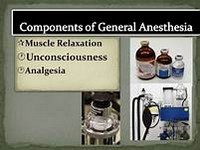doxapram hydrochloride
CLINICAL USE
Postoperative respiratory depression Acute respiratory failure
DOSE IN NORMAL RENAL FUNCTION
Postoperative respiratory depression: IV injection 1–1.5 mg/kg repeated at hourly intervals, or
IV infusion
2–3 mg/minute, adjusted according to response. Acute respiratory failure: 1.5–4 mg/minute as an
IV infusion
, adjusted according to response
PHARMACOKINETICS
DOSE IN RENAL IMPAIRMENT
GFR (mL/MIN)
DOSE IN PATIENTS UNDERGOING RENAL REPLACEMENT THERAPIES
IMPORTANT DRUG INTERACTIONS
Potentially hazardous interactions with other drugs
ADMINISTRATION
Reconstition
–
Route
IV bolus,
IV infusion
Rate of Administration
IV injection: over at least 30 seconds
IV infusion
as indication
Comments
Doxapram has a narrow margin of safety; the minimum effective dosage should be used and maximum recommended dosages should not be exceeded
OTHER INFORMATION
Unlike naloxone, doxapram does not reverse the other effects of opioid analgesics
